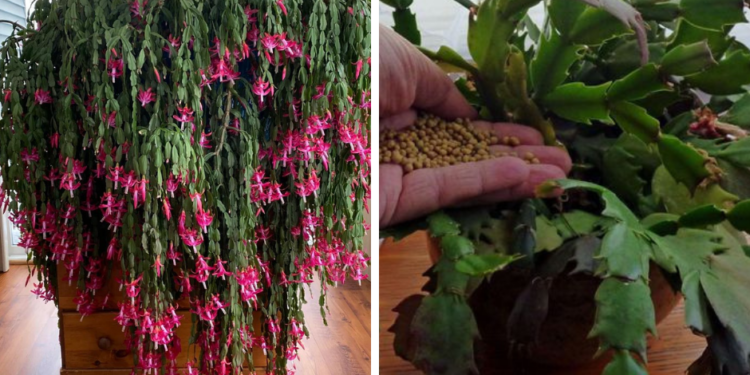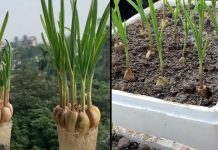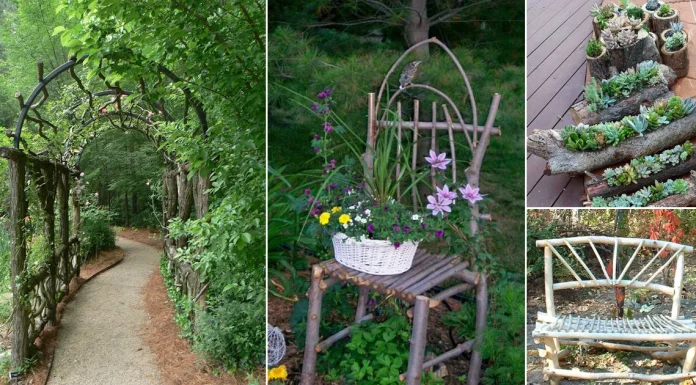Bringing your Christmas cactus into full, glorious bloom precisely at Christmas requires a combination of light, temperature, and timing adjustments.
The Christmas cactus, with its vibrant, cascading blooms, is a festive favorite that brings holiday cheer to homes around the world.
While this resilient plant typically flowers in late fall or early winter, getting it to bloom precisely at Christmas requires a bit of strategic care and attention.
In this article, we’ll explore the secrets to coaxing your Christmas cactus into a dazzling display of blooms just in time for the holiday season.
Understanding the Christmas Cactus
Before diving into the blooming strategies, let’s understand the Christmas cactus (Schlumbergera spp.).
Native to the rainforests of Brazil, these epiphytic cacti have unique blooming requirements influenced by their natural habitat.
Unlike typical desert cacti, Christmas cacti thrive in the filtered light and humid conditions found beneath the rainforest canopy.
1. Light Exposure
Proper light exposure is crucial for triggering the blooming cycle of a Christmas cactus. In the weeks leading up to the holiday season, provide your cactus with bright, indirect light.
Avoid direct sunlight, as this can lead to leaf burn. A south or east-facing window is ideal for ensuring your Christmas cactus receives the right balance of light.
2. Temperature Control
Christmas cacti appreciate cool temperatures to initiate bud formation. In the weeks before the desired blooming period, expose the plant to cooler temperatures, ideally around 50-55°F (10-13°C).
This cooling period mimics the conditions of their native habitat and encourages the cactus to set buds for a bountiful display.
3. Controlled Watering
Proper hydration is essential for a healthy Christmas cactus, but overwatering can hinder blooming. Keep the soil consistently moist, allowing the top inch to dry out between waterings.
Reduce watering slightly in the weeks leading up to Christmas to simulate the drier conditions of its native environment and encourage blooming.
4. Nutrient Boost
Fertilize your Christmas cactus regularly during the growing season (spring and summer) with a balanced, water-soluble fertilizer.
In the fall, as you approach the blooming period, reduce fertilizer applications. This shift in nutrient availability signals to the plant that it’s time to transition from growing to flowering.
5. Dark Period
One of the critical factors in encouraging Christmas cactus blooming is providing a period of uninterrupted darkness.
About six weeks before you want your cactus to bloom, expose it to 12-14 hours of darkness each night. This can be achieved by placing the cactus in a completely dark room or covering it with a light-proof cloth.
The darkness prompts the plant to set buds and prepares it for a spectacular display.
6. Humidity Enhancement
Maintaining higher humidity levels can enhance the blooming potential of your Christmas cactus.
Grouping plants together, placing a tray of water nearby, or using a humidifier can help create the humid conditions these rainforest natives prefer.
7. Pruning for Shape
If your Christmas cactus has become leggy or unruly, consider pruning it in the spring or early summer.
This not only improves the plant’s shape but also encourages more prolific branching, leading to a fuller display of blooms during the holiday season.
Bringing your Christmas cactus into full, glorious bloom precisely at Christmas requires a combination of light, temperature, and timing adjustments.
By mimicking the conditions of its native habitat and providing the right cues for blooming, you can transform your Christmas cactus into a dazzling centerpiece that captures the spirit of the season.
With a little care and strategic planning, your Christmas cactus can be a living testament to the magic of the holidays.










